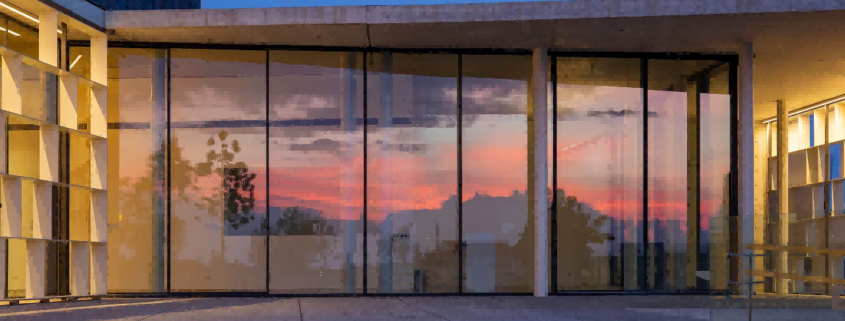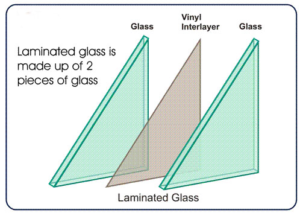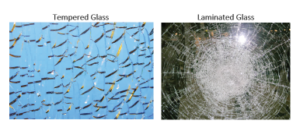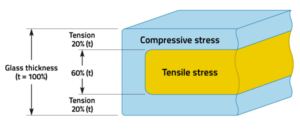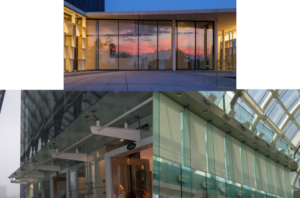Tempered glass vs. laminated glass comparison and review
What is laminated glass?
Laminated glass is made of two sheets of plain or tempered glass sandwiched around a layer of transparent plastic film (PVB). The set of glass is processed through a process designed to expel air bubbles and then heated for an initial round of melting. After this, the glass is heated under pressure to form the final bonded product. It can be made stronger by adding layers that make the final product thicker.
What does laminated glass do?
If it is subjected to a high-intensity impact, one side of the glass will shatter without causing the other side to shatter. Even if the glass does break on either side, the shards will stay together, creating a spider web pattern.
Some additional benefits of that are that it reduces the transmission of high-frequency sound (sound insulation) and blocks 97% of UV radiation. A major benefit is that it with minor impact damage can be repaired with a special clear adhesive resin.
Where is laminated glass used?
It is commonly used in high-rise building windows, skylights, balconies, and frameless glass railings. Homeowners who live in noisy places such as airports or near golf courses often need laminated glass.
What is tempered glass?
Tempered glass is a piece of annealed (ordinary) glass that acquires its safety properties through a heating and cooling process called “tempering”. The process involves heating the glass and cooling it immediately. Cooling incredibly hot glass quickly causes the outside of the glass to harden faster than the center. This process puts the center in tension, making the glass stronger and more durable than regular glass.
The difference between tempered glass and It is that it is a single piece of glass. Remember, it is two pieces of glass sandwiched around a piece of plastic film.
What does tempered glass do?
Tempered glass, also known as tempered glass, is stronger than ordinary glass, but easily shattered. Similar to laminated glass, when tempered glass is impacted, it breaks into a mesh interlocking pattern and remains within the frame. This is not always the case, as broken pieces will only grab adjacent pieces and may fall out of the frame.
Tempered glass is safety glass because it’s more durable than regular glass, and it’s designed to shatter into less harmful pebble-like shards, rather than sharp and jagged shards.
Unlike laminated glass, tempered glass cannot be repaired.It can be repaired with minor damage, but damage to any part of the tempered glass will eventually cause the glass to shatter. Glass breaks because the equilibrium stress in the glass is disturbed by high-stress shocks.
Where is tempered glass used?
Flat-tempered and curved-tempered glass is safety glass. Widely used in high-rise building doors and windows, glass curtain walls, indoor partition glass, lighting ceilings, sightseeing elevator passages, furniture, glass guardrails, etc
Tempered or Laminated: How to Choose the Right Glass for Your Job?
Keep in mind that both tempered and laminated glass qualifies as safety glass and it is more expensive than tempered glass. Although it is stronger than tempered glass, tempered glass is more commonly used in home windows and doors. It is rarely used in residential construction due to its high price.
Tempered glass provides strength and resistance to breakage, but laminated glass provides UV resistance, additional security, and sound insulation. Both types of glass are easy to clean and maintain, provided they are installed correctly. After learning about the benefits of safety glass, it seems like a good idea to use it in all applications, especially when considering them for your home,

